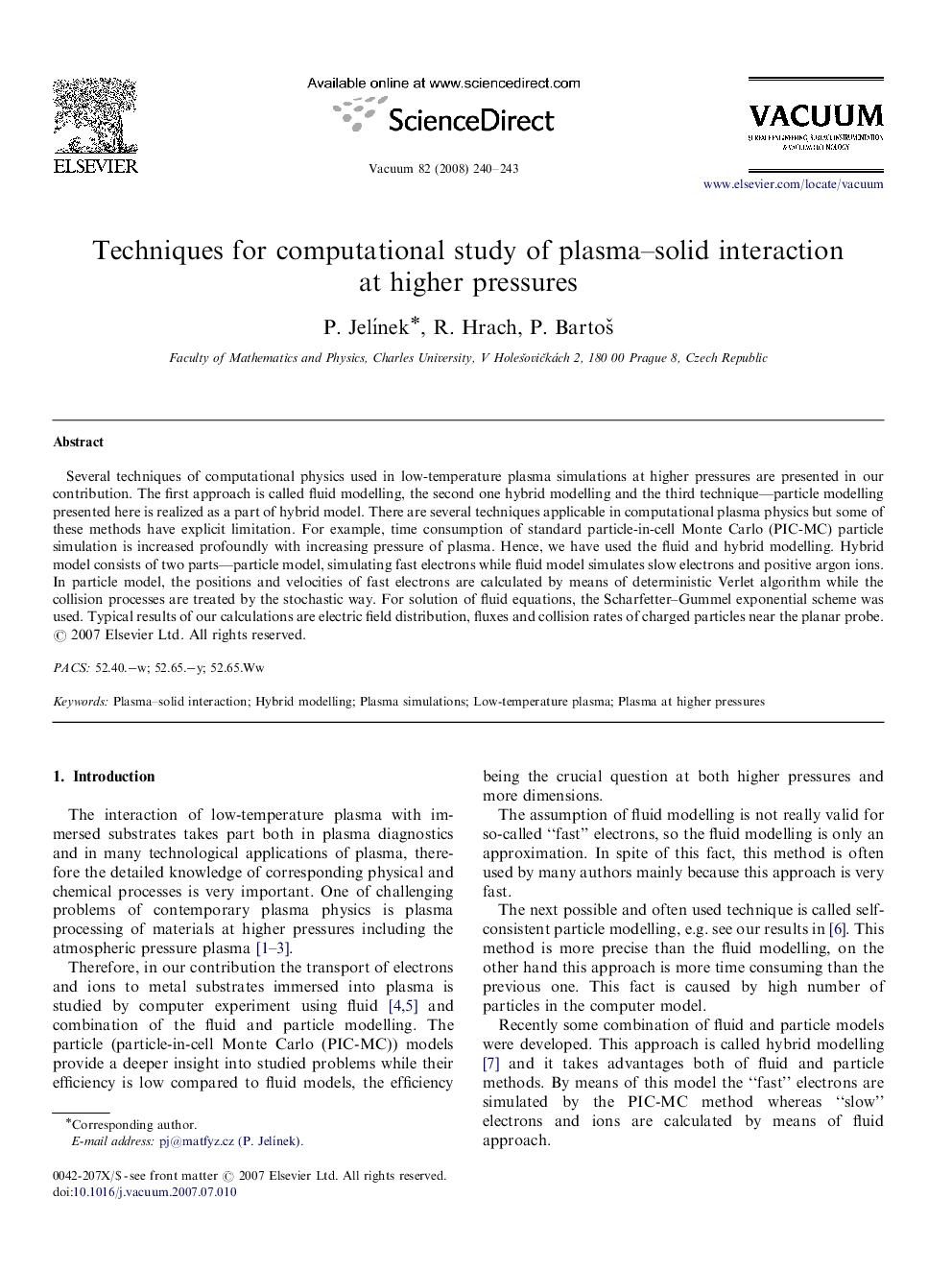| Article ID | Journal | Published Year | Pages | File Type |
|---|---|---|---|---|
| 1690468 | Vacuum | 2007 | 4 Pages |
Abstract
Several techniques of computational physics used in low-temperature plasma simulations at higher pressures are presented in our contribution. The first approach is called fluid modelling, the second one hybrid modelling and the third technique-particle modelling presented here is realized as a part of hybrid model. There are several techniques applicable in computational plasma physics but some of these methods have explicit limitation. For example, time consumption of standard particle-in-cell Monte Carlo (PIC-MC) particle simulation is increased profoundly with increasing pressure of plasma. Hence, we have used the fluid and hybrid modelling. Hybrid model consists of two parts-particle model, simulating fast electrons while fluid model simulates slow electrons and positive argon ions. In particle model, the positions and velocities of fast electrons are calculated by means of deterministic Verlet algorithm while the collision processes are treated by the stochastic way. For solution of fluid equations, the Scharfetter-Gummel exponential scheme was used. Typical results of our calculations are electric field distribution, fluxes and collision rates of charged particles near the planar probe.
Keywords
Related Topics
Physical Sciences and Engineering
Materials Science
Surfaces, Coatings and Films
Authors
P. JelÃnek, R. Hrach, P. BartoÅ¡,
